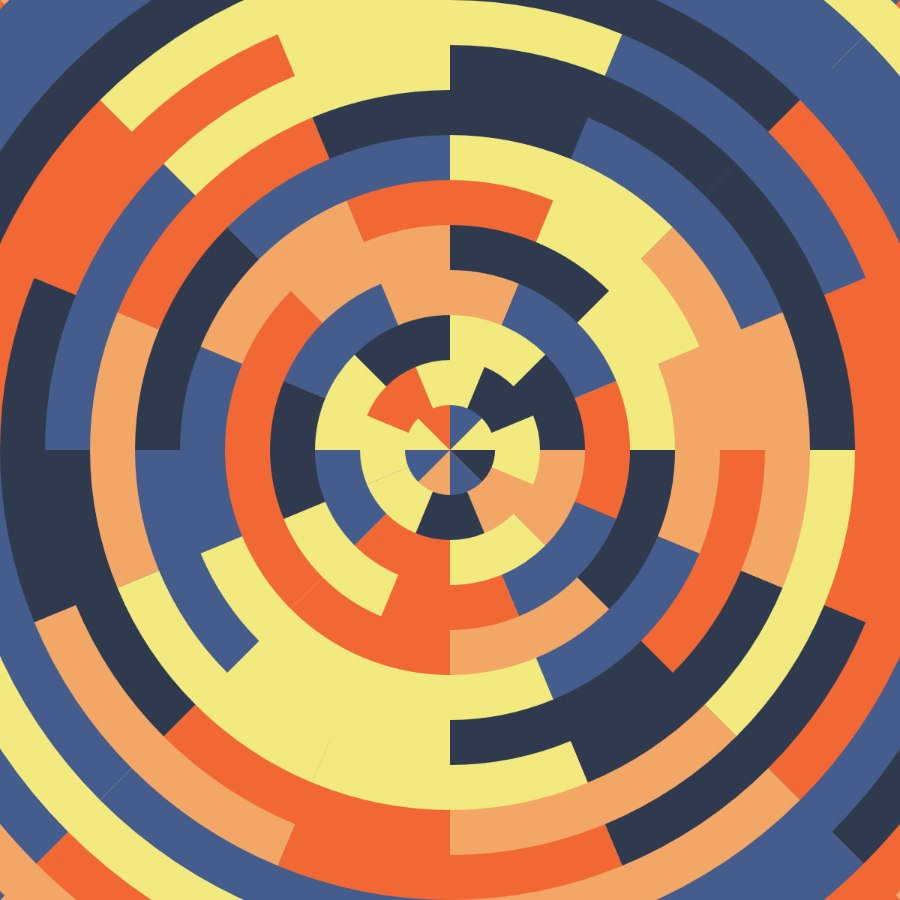Intro to Computational Media 9/27/22
Solar twig
Link to week 4 homework in the p5 web editor.
This week, my sections of ICM and Visual Language synced up: the two homework assignments encouraged students to make compositions that explore repetition with variation, both with syllabus nods to the work of Vera Molnar. My choice of color palette, selected from a photo of a Maine sunset taken on a 2022 summer camp trip with friends, was a limitation from the Visual Language assignment. I decided to tackle this work as one exploration for both classes, thinking that it’d help guide my process and save some time.

I really don’t know if I achieved the latter. I spent a lot of time this weekend staring at my not-very-long sequences of code. I tweaked variables and for loops in search of more satisfying compositions, hoping that one or two would strike me in a way such that I’d then push to make interactive offshoots, instead of keeping everything in “noLoop();” realm. I watched more Coding Train videos than I needed to, and I read a lot more of the book about 10 PRINT than I thought I would.
A few of the programs I made (particularly #2, the output of which reminded my partner of airport carpets) are particularly indebted to the spirit or structure of 10 PRINT. As interesting as I found the potential for variations on a theme with 10 PRINT, I feel like thinking about it so much kind of contributed to my feeling stuck in a rut. I started with simple variations but ultimately never got to a point where I was really all that happy with the outputs once I had worked in other shapes and the chosen color palette. One small exception to this was the way I incorporated the palette in #3, which sets the darker shade of blue as the background and cycles through the other four in a loop, from top left to bottom right. It does so by taking a modulo of the sum of the variables used for the nested for loops that give my rows and columns. I’m happy with that, at least!
My formal ICM submission for this week, #5 above, came about when I tried to make #1 more interesting by rotating some of the inscribed arcs by 45 degrees. After some tweaking I ended up with #4, which was more varied and visually interesting by accident than what I had set out hoping to make. Still, one of the earliest explorations I made with this palette involved concentric circles and I wanted to get back to that. The result in #5, which I’m keeping the randomized p5 web editor name “Solar Twig” for, was a short path to exactly what I wanted. Every other concentric arc is rotated offset by pi/8, which more readily leads to these areas where multiple adjacent sections of arc can share a single color in a sort of interlocking puzzle effect.

A few inspirations behind this composition: the cover of Room on Fire by The Strokes, iconography from Valve’s Half-Life series, the Terry Cavanagh game Super Hexagon.–10/3/22
